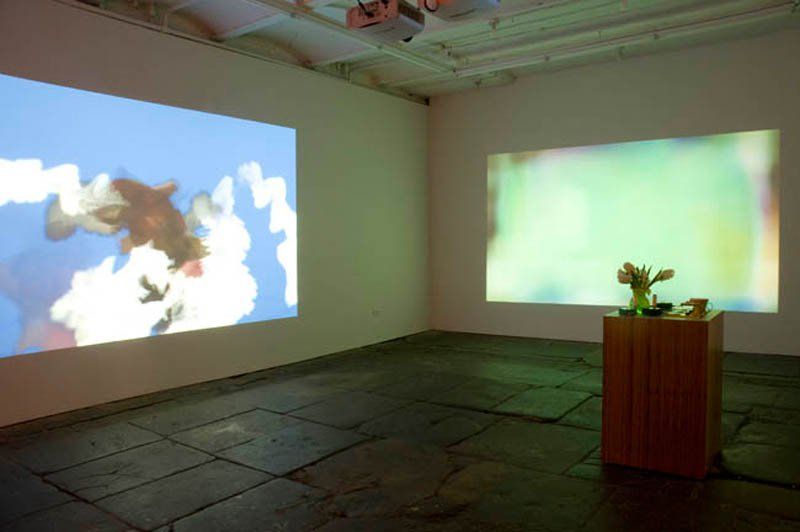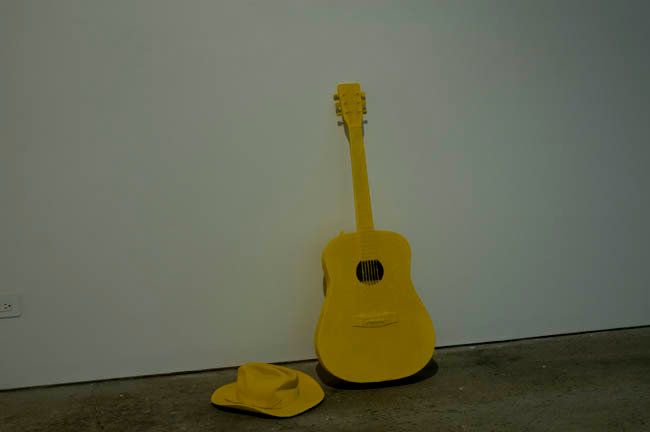Luke Murphy
Certainty Shelter, Apr 2 – May 3, 2009
Past: 55 Chrystie St
Installation view, Certainty Shelter, Canada, New York, 2009

Installation view, Certainty Shelter, Canada, New York, 2009

Installation view, Certainty Shelter, Canada, New York, 2009

Artworks

Luke Murphy,
Certainty Shelter ("Barny's next step after canvas", "Dance of Perfect Randomness", "Drift"),
2009,
Dimensions variable,
Application with source code, Uranium glass vase, Geiger counters, cabinet, computer hardware

Luke Murphy,
Luke's Guitar, 2009,
2009,
Guitar, cowboy hat, reflective yellow paint, glass beads
Press Release
We are proud to announce Luke Murphy's third solo show at CANADA. In one room with three large digital projections, a central pedestal holds three Geiger counters with their probes pointed at what appears, at first glance, to be an innocuous glass vase. That vessel however is made of Vaseline glass, also known as uranium glass, which glows with UV fluorescence. The glaze used on Vaseline glass is a mild beta emitter that naturally decays and releases fast-moving electrons and positrons. Each of the three Geiger Counters detect the charged particles and sends a unique signal to a computer, which responds by generating the speed, color, placement, and transitions in the three projections. Unlike work that uses random number sequences, which are not 100% random, Murphy harnesses uranium’s decay to create “perfect randomness”. The use of randomness, the aleatory (from the Latin to roll dice), and chance elements or sources has a long history in art. From the Lascaux cave drawin!! gs where the forms of the animals seem to result from the rock formations to Alexander Cozens and his “New Method” of random blots to Strindberg, the Surrealists, Duchamp and Cage, the relation of the artist to the random has moved from suggestion and inspiration to a kind of anti-esthetic. Murphy believes there are roughly three models of randomness as part of the artistic process: suggestion, inspiration, and subversion. Common to all however is that the random is a strategy to circumvent our normal controls and frames of reference. It is a cipher for nature itself both as a generative and as a destructive force, in other words, the sublime.
“The time between ticks of the Geiger counter is the wholly unknown that makes up the fabric of the universe. It is the emptiness and unknowability of the machine. The computer translates that sublime unpredictability into a new sublime of information by taking the truly random intervals and making them true random numbers. Confronting the fact that no tick interval can be predicted is like accepting the reality of a vacuum. It exposed the limits of language and imagination.”